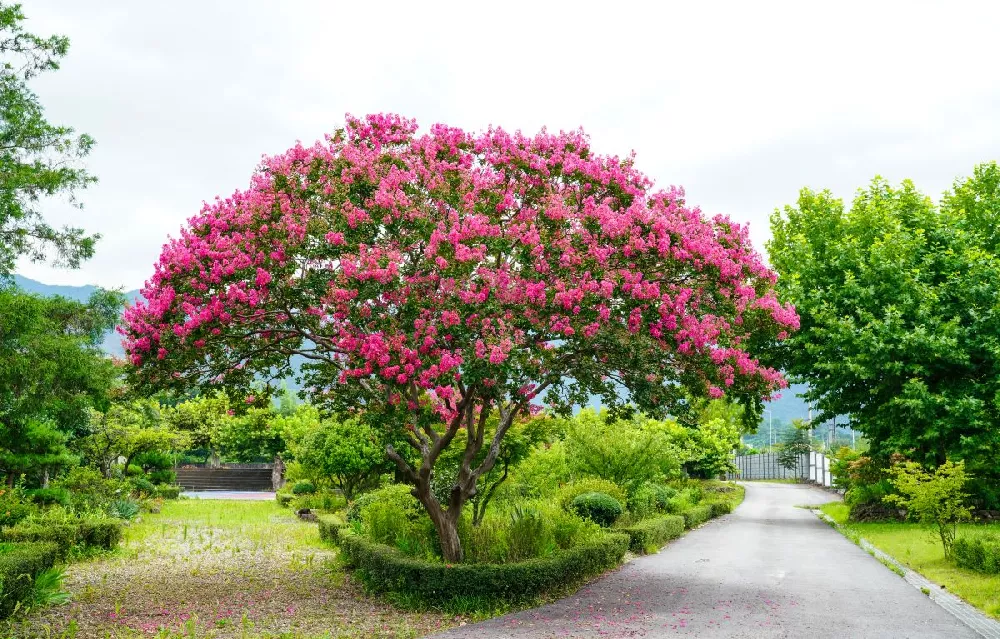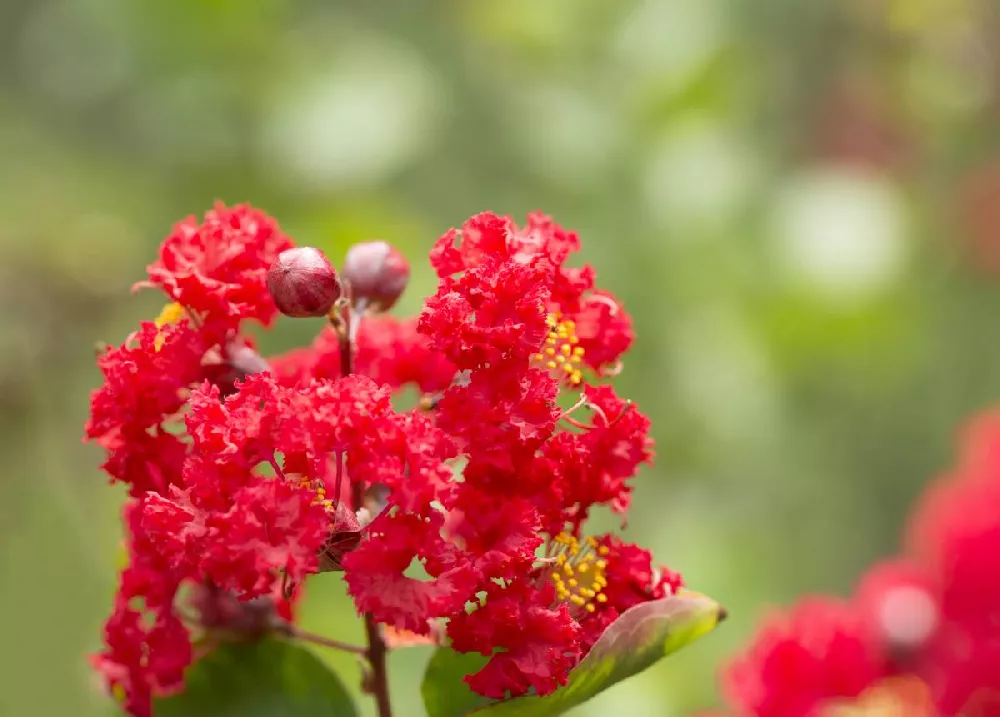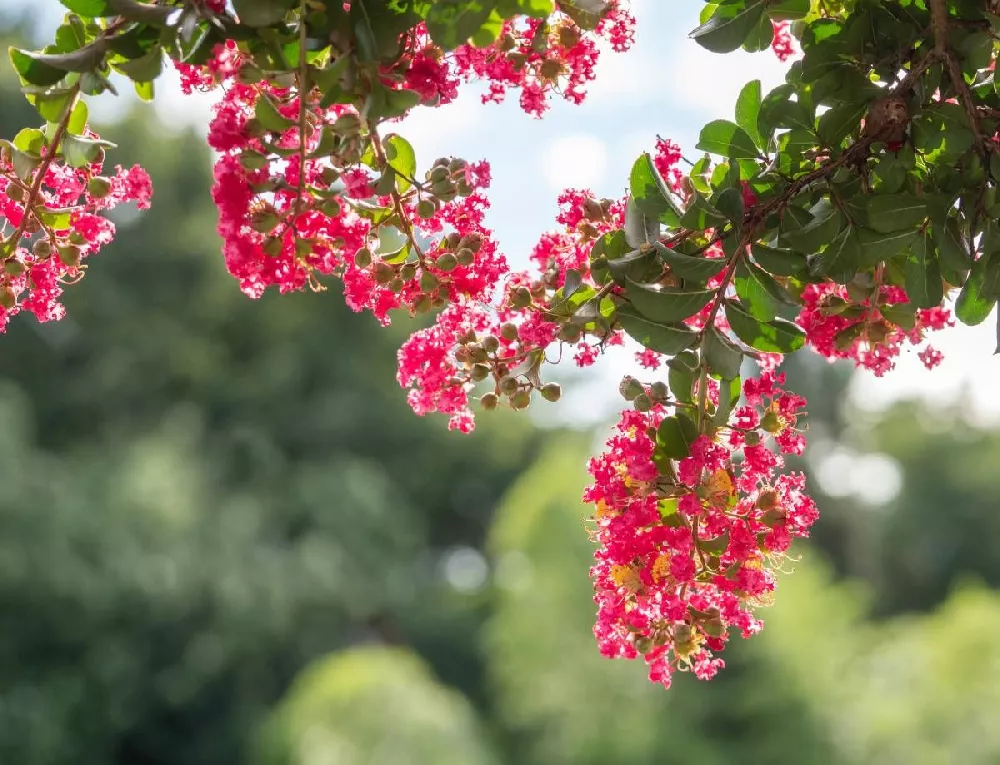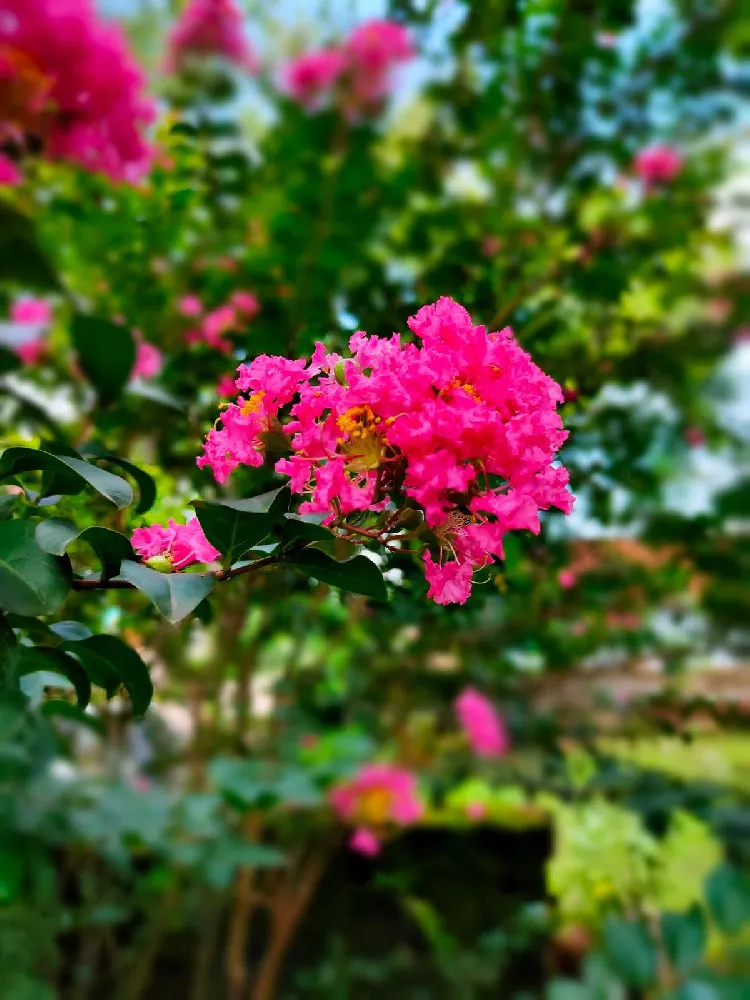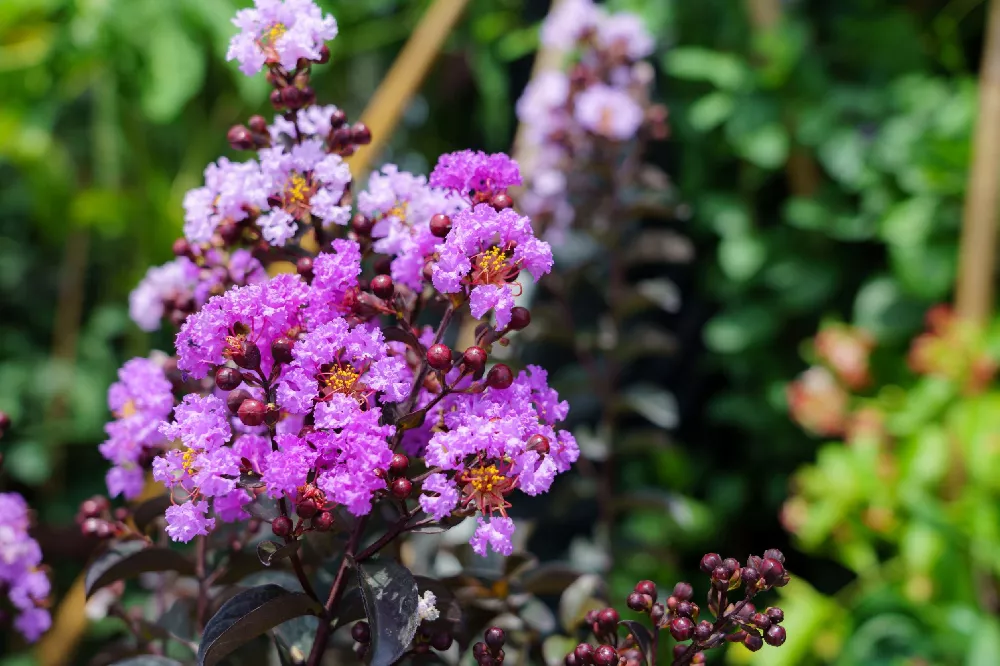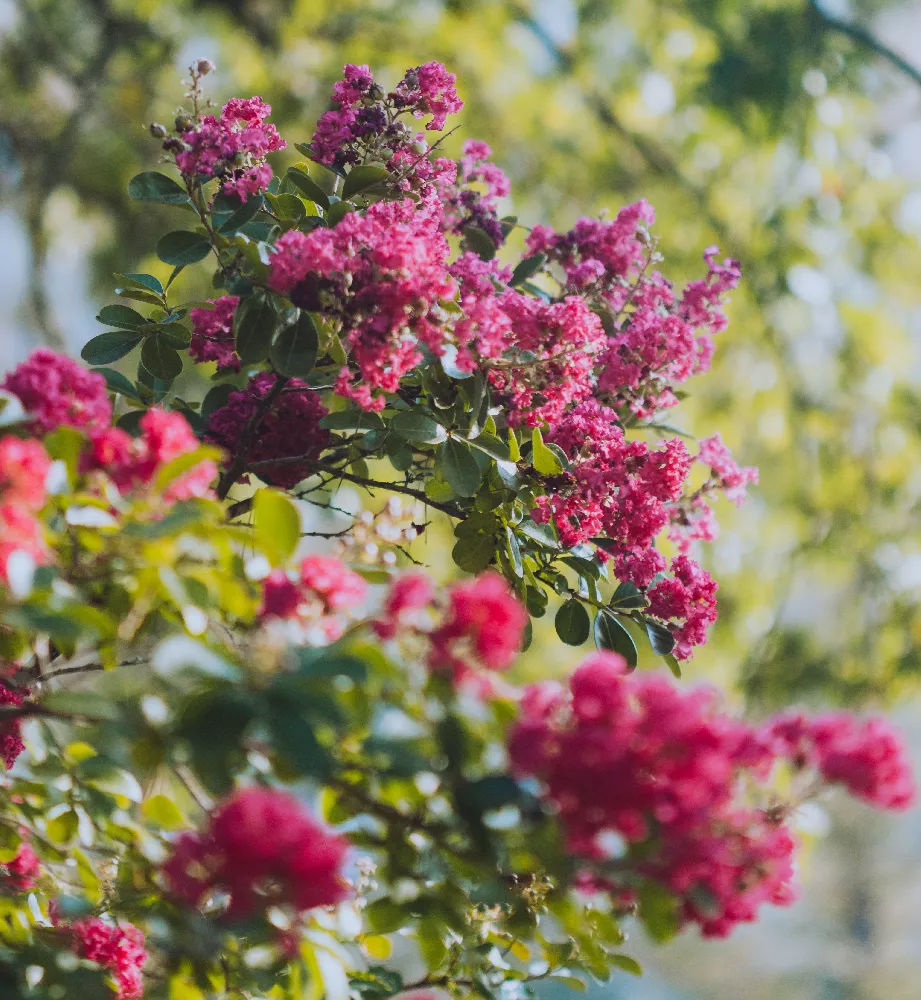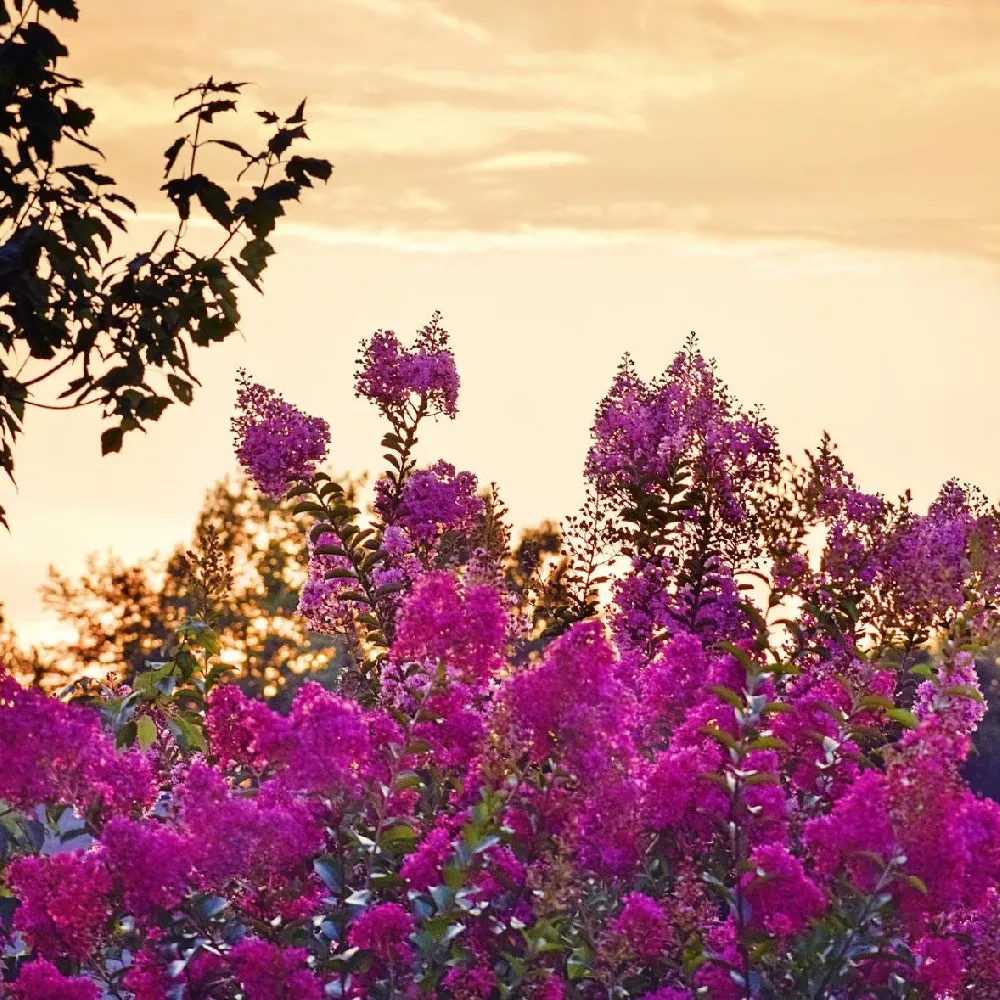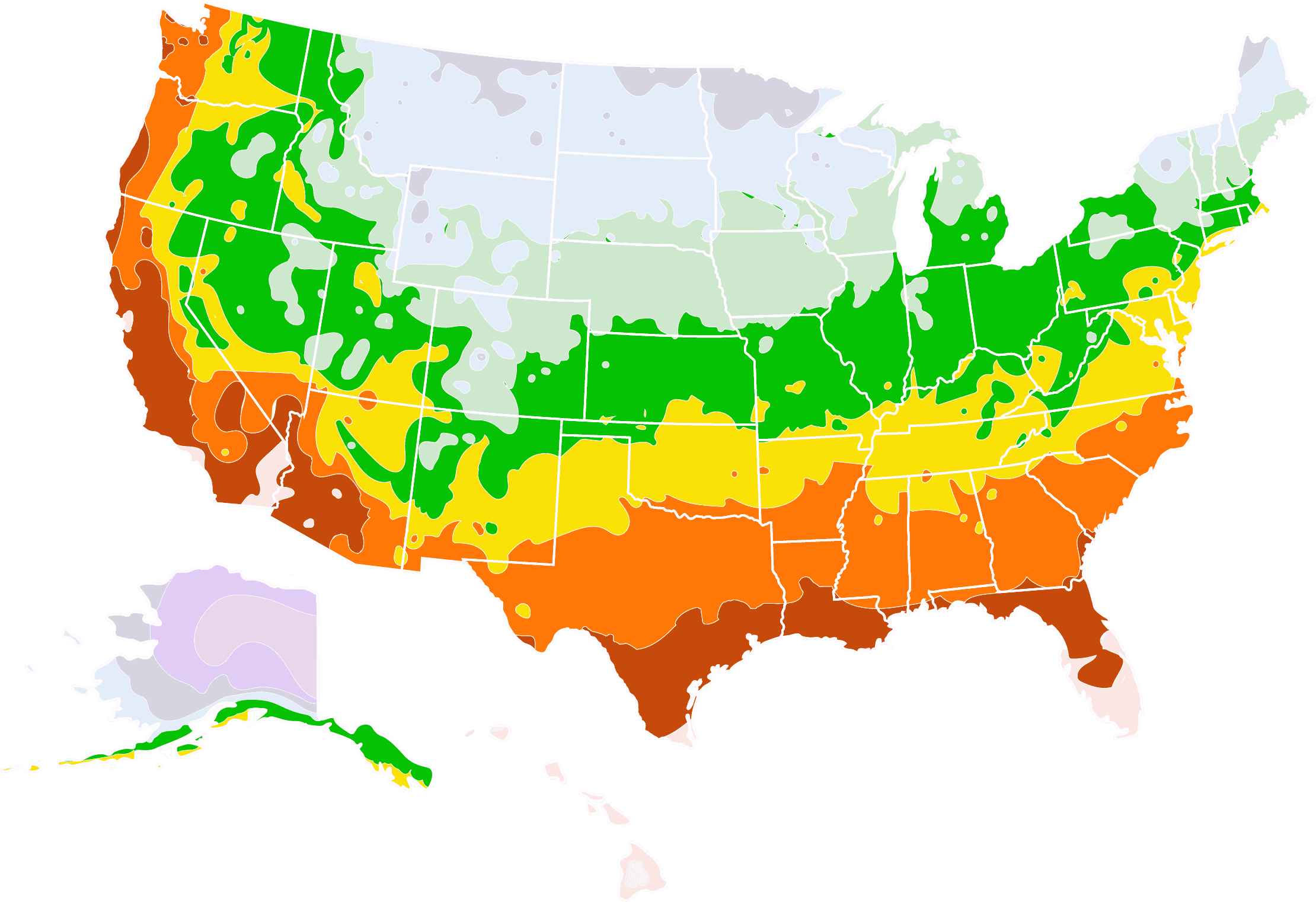- Home >
- Flowers >
- Trees and Plants with Red Flowers >
- Cherokee Crape Myrtle
Cherokee Crape Myrtle for Sale - Buying & Growing Guide
Since it is one of the more compact crape myrtle trees, the Cherokee Crape Myrtle is the ideal plant to grow if you want to add color to a relatively tight planting space. During mid-summer, this plant, known botanically as Lagerstroemia indica 'Cherokee,' opens its bright red flowers and will continue to bloom through September. The Cherokee Crape Myrtle can also develop a lovely multi-stemmed habit that only adds to this plant's ability to stand out as a showcase focal point in any garden.
- This plant blooms repeatedly from July to September with red flower clusters.
- The Cherokee Crape Myrtle is compact compared to many other crape myrtles.
- This crape myrtle has a graceful multi-stemmed habit.
Enter your zip code to find nearby stores that may carry this plant.
Plant Care
Sunlight

Grow your Cherokee Crape Myrtle in an area that receives six hours of daily sunlight or more.
Watering
Water this plant weekly during the establishment period. After establishment, supply water when the first three inches of soil are dry.
Fertilizing

Feed this plant annually in early spring with an all-purpose fertilizer.
Planting and Care
Planting instructions
The Cherokee Crape Myrtle Tree should grow in an area with full sun, preferably where there is nutrient-rich acidic soil that is moderately moist with excellent drainage. Once you find an area that meets those conditions, you should dig a hole that is as deep as the plant’s root ball is tall and at least twice as wide. Place your Cherokee Crape Myrtle in the hole and backfill it while supplying plenty of water. After backfilling, cover the planting area with a layer of organic mulch, which will help maintain soil moisture.
Watering and nutrients
Your Cherokee Crape Myrtle will need the most water during its first few months of growth. During that time, you should water this plant about once per week or often enough to maintain consistent soil moisture. After your Cherokee Crape Myrtle is well-established, you should give it water only when you notice that the first three inches of soil have dried out. The best way to fertilize this plant is to give it a feeding of all-purpose fertilizer once per year during the early spring.
Pollination
The long bloom period of the Cherokee Crape Myrtle gives pollinator insects plenty of opportunities to feed on this plant’s nectar while transferring pollen from one flower to another. Since the Cherokee Crape Myrtle is a self-fertile plant, pollination typically occurs quite easily. However, pollination is not something you’ll need to concern yourself with when caring for this plant since the capsule fruits of a Cherokee Crape Myrtle are neither commonly eaten nor do they hold significant ornamental value.
Pruning
The best time to prune a Cherokee Crape Myrtle is during the later winter and early spring, while this plant is exiting its dormant phase and returning to a period of active growth. Pruning early in the season also does not come with the risk of removing the season’s flower buds since this plant sets its buds on new wood. When pruning, it is crucial to use tools that are both sharp and sterile and to remove any limb that is dead, damaged or diseased.
Pests, diseases and animals
The cultivation of the Cherokee Crape Myrtle causes this plant to have excellent overall resistance to disease, especially when it receives proper care. Most notably, the Cherokee Crape Myrtle Tree rarely experiences powdery mildew—a moisture-related disease that can afflict many crape myrtles. However, it remains possible for this plant to experience pest infestations. Some of the most common pests that will harm your Cherokee Crape Myrtle are aphids, scale insects, ambrosia beetles and Japanese beetles.
Achieving maximum results
When your Cherokee Crape Myrtle is young, it is typically best to prune it so that it develops a few main stems. Once your tree is somewhat mature, you can remove much of the foliage that appears on the lower half of this plant, which will help reveal the attractive multi-stemmed habit. Selective pruning can also improve the blooms of this plant. During each bloom period, search for and remove any spent blooms, which will prompt this plant to produce more flowers.
FAQs
Does the Cherokee Crape Myrtle Tree offer fall color?
The Cherokee Crape Myrtle is not only impressive during its summer bloom time, but it can also add ornamental appeal to your garden later in the season too. During early fall, this plant will likely continue to hold a few vibrant flower clusters. As fall progresses, the leaves of this plant tend to turn orange or red. This plant also has bark with red and brown hues that remain attractive year-round.
Where can the Cherokee Crape Myrtle grow?
The Cherokee Crape Myrtle tree can grow in nearly any region that falls within hardiness zones six through nine. This hardiness allows the Cherokee Crape Myrtle to survive as long as the temperatures remain above 0 degrees Fahrenheit. As such, this plant is a viable planting option for most gardeners who live in the western, southwestern, southeastern and mid-Atlantic regions of the United States.
How large does the Cherokee Crape Myrtle Tree grow?
In most instances, the Cherokee Crape Myrtle tree will reach about 8 to 10 feet tall and about six to eight feet wide at maturity. However, there are also some instances in which this plant can grow a bit larger and reach about 20 feet tall. Be sure to account for that varying size during the planting process by giving your Cherokee Crape Myrtle at least 8 to 10 feet of spacing in every direction to prevent overcrowding in the future.
Compare Similar Products
You can't add more Product Name - Product size to the cart.
OK